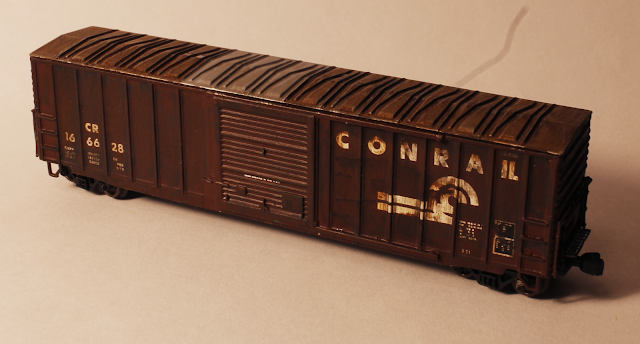After the Vietnam War the United States Army came to a conclusion that although the Bell Huey was a success for transporting troupes from a base to the battle ground, it wasn’t the best option for loitering around the battlefield and supplying help to ground troupes and their targets. Originally produced by Hughes Helicopters, later being a McDonnell Douglas helicopter, the AH-64 Apache was the answer for this need of a helicopter that could supply support for ground troops on the battlefield as well as attack enemy targets with great precision. The first real test of action for the Apache, besides its deployment in Europe in 1987, came during the Gulf War in 1991. With its capability of flying at night with advance night vision and weapon system locking ability, the Apache proved to be a reliable friend to the allied ground troops as was the A-10 Warhog.
This build started like most models, with the cockpit
construction first, with a decent raised detail of the instruments and panels
in the cockpit area I opted to not use the supplied decals to depict the look
of the interior. Sections of the panels were painted flack black and then dry
brushed with a gunmetal metallic paint. The helicopter was built completely box
stock as per the instructions included in the kit with the exceptions of the
decals not used in the cockpit area, some aftermarket decals for the Apaches
markings, and the grab irons on the helicopter were replace with custom bend
ones instead of the flimsy plastic ones. The clear parts were dipped in Pledge
Future Floor Polish and the Bare Metal foil was used to mask them off. The
Apache was sprayed first with Tamiya white primer and the Tamiya Olive Drab.
The props were masked off and sprayed with Tamiya matt black. Once the model
had its glass cote applied, it was then decaled. The Hellfire missiles received
special attention; the original front was carefully cut off and replaced with
MVP clear lenses. The lenses were then coated with Tamiya clear yellow to
simulate the UV protection on the real lenses for the front sensors. The
aftermarket decals used come from Microscale and Hasegawa from my spare decal
box. The last items to add to the model were the “Remove Before Flight” tags on
the hard points of the helicopters wings, these are photo-etch and from Eduard.
This was a great model to build surprisingly. I never really like too many of
the Academy kits in this scale but the past three I have done, The OV-10
Bronco, A-36 Dragon Fly, and this one, have been a joy to build. TRWBM







